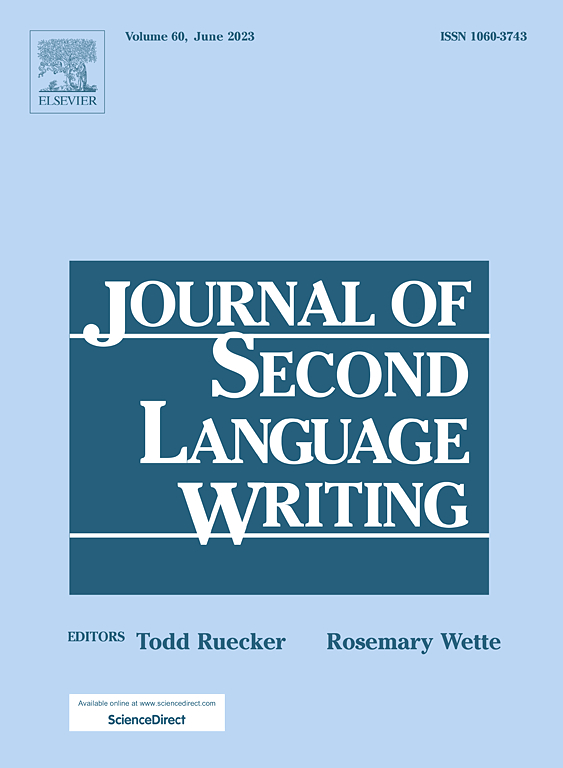从算法到注释:通过AI-human比较重新思考学术写作中的反馈实践
IF 4.5
1区 文学
Q1 LINGUISTICS
引用次数: 0
摘要
虽然ChatGPT因其效率而在教育领域获得了突出的地位,但很少有人知道它的反馈与人类教师的反馈相比如何,特别是在有第二语言(L2)作者的学术英语(EAP)环境中。本研究考察了ChatGPT和教师如何在对马来西亚第二语言学生撰写的200篇学术介绍的评价评论中使用认知策略(自信vs缓和)和传递方法(独白vs对话)。研究结果显示,两种反馈源都采用了缓解措施,为接受学术批评营造了一个体面的环境。然而,教师表现出更大的自信,更多地依赖于对话反馈,反映出他们在指导修订和促进互动方面的权威作用。相反,ChatGPT主要提供单一反馈,提供即时的、语法正确的静态注释。这两种来源最常见的混合是缓解与对话交付相结合,这突出了灵活性与参与之间的平衡。总体而言,该研究表明,虽然人工智能反馈可以补充人类输入,但它往往缺乏教师反应的适应性和人际深度。这些见解通过指出混合反馈模型的价值,为EAP和L2写作教学提供了信息,这些模型利用了人工智能的效率,同时保留了人类专业知识的互动性和权威性。本文章由计算机程序翻译,如有差异,请以英文原文为准。
From algorithms to annotations: Rethinking feedback practices in academic writing through AI-human comparison
While ChatGPT has gained prominence in education for its efficiency, little is known about how its feedback compares to that of human instructors, particularly in English for Academic Purposes (EAP) settings with second language (L2) writers. This study examined how ChatGPT and instructors used epistemic strategies (assertiveness vs. mitigation) and delivery methods (monologic vs. dialogic) in their evaluative comments on 200 academic introductions written by Malaysian L2 students. The findings revealed that both feedback sources employed mitigation comparably to foster a face-saving environment for receiving academic criticism. However, instructors demonstrated greater assertiveness and relied more on dialogic feedback, reflecting their authoritative role in guiding revisions and prompting interaction. Conversely, ChatGPT predominantly provided monologic feedback, offering immediate and grammatically sound but static comments. The most common blend in both sources was mitigation combined with dialogic delivery, which highlights a balance between flexibility and engagement. Overall, the study indicates that while AI feedback can complement human input, it often lacks the adaptability and interpersonal depth of instructor responses. These insights inform EAP and L2 writing pedagogy by pointing to the value of blended feedback models that leverage AI’s efficiency while retaining the interactive and authoritative qualities of human expertise.
求助全文
通过发布文献求助,成功后即可免费获取论文全文。
去求助
来源期刊

Journal of Second Language Writing
LINGUISTICS-
CiteScore
8.80
自引率
13.10%
发文量
50
审稿时长
59 days
期刊介绍:
The Journal of Second Language Writing is devoted to publishing theoretically grounded reports of research and discussions that represent a significant contribution to current understandings of central issues in second and foreign language writing and writing instruction. Some areas of interest are personal characteristics and attitudes of L2 writers, L2 writers'' composing processes, features of L2 writers'' texts, readers'' responses to L2 writing, assessment/evaluation of L2 writing, contexts (cultural, social, political, institutional) for L2 writing, and any other topic clearly relevant to L2 writing theory, research, or instruction.
 求助内容:
求助内容: 应助结果提醒方式:
应助结果提醒方式:


